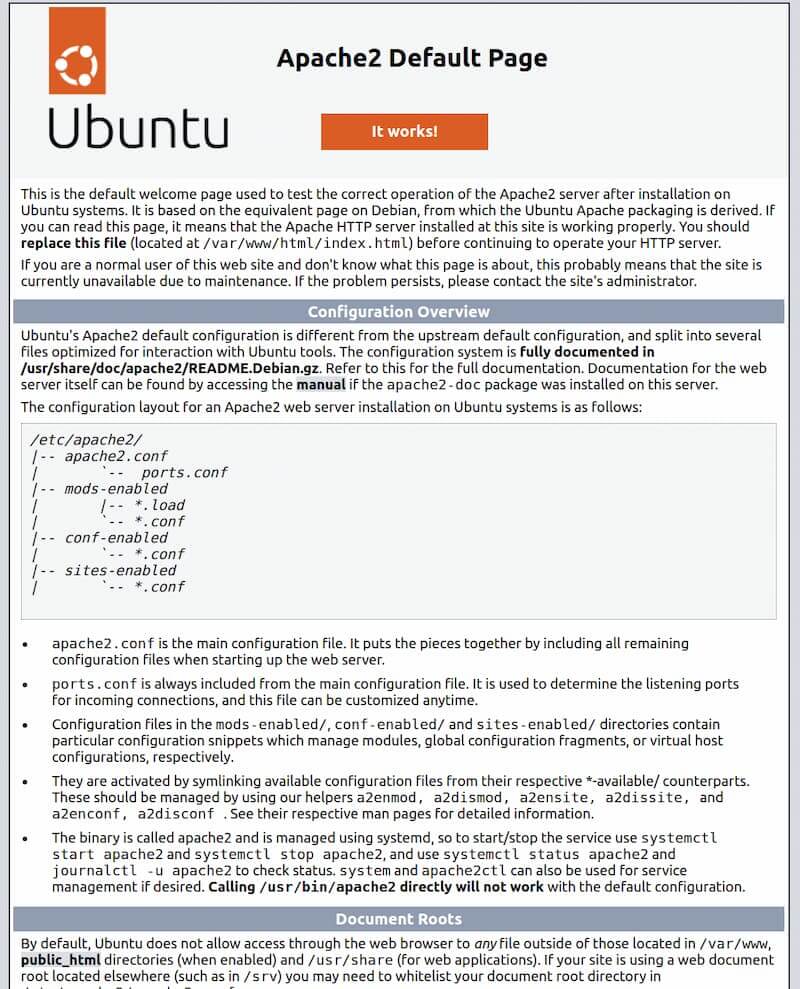
Introduction – Install Apache PHP MySQL on Ubuntu 22.04
“LAMP” stack is a very popular word nowadays and it just means – Linux (Ubuntu comes under this), Apache, MySQL, and PHP. All of these are open-source software and are installed together in order to enable a web server to host PHP-based web applications and dynamic websites (based on WordPress CMS etc).
By the end of this tutorial, you’ll be able to set up a LAMP stack on an Ubuntu 22.04 machine.
If you don’t have an Ubuntu machine, you can try DigitalOcean to get a machine (or VPS), popularly known as DROPLET in the DigitalOcean community. Signup DigitalOcean using this link and get $100 worth of credits for FREE.
Prerequisites
In order to complete this tutorial, you have to have an Ubuntu 22.04 server with a sudo-enabled user account.
Step 1 — Installing Apache and Updating the Firewall
The Apache web server is popularly used, well documented, and has an active community of users.
We will start by updating the package manager cache of our Ubuntu system.
sudo apt-get update
After this, we’ll install Apache by running the following command in our terminal:
sudo apt-get install apache2
Please confirm Apache’s installation by pressing Y, then ENTER.
After this is done, we need to adjust the firewall settings by running the following commands:
sudo ufw app list sudo ufw allow in "Apache"
Explaining these commands in detail doesn’t make much sense here. If you’re interested, please use Google search. 🙂
Now Apache is installed, you can confirm this by visiting:
http://your_server_ip
You should see Apache’s default page like the below screenshot:

Apache’s Default Page
Step 2 — Installing MySQL
sudo apt-get install mysql-server mysql-client
When you’re finished, test whether you’re able to log in to the MySQL console by typing:
sudo mysql
In order to exit the MySQL console, type exit:
exit
Step 3 — Installing PHP
In order to install the latest PHP and all the related packages, please run the following command:
sudo apt install php libapache2-mod-php php-mysql php-curl php-xml php-gd mysql-client zip unzip php-zip php-json php-mbstring
In order to install “mcrypt” extension, we will have to run following commands to install its pre-requisites first:
sudo apt-get install php-dev php-pear libmcrypt-dev gcc make autoconf libc-dev pkg-config
After this, we’ll have to run the following commands to compile the mcrypt extension:
sudo pecl install mcrypt
Just press enter when it asks about the libmcrypt prefix.
To enable the extension for apache, run the following command:
echo "extension=mcrypt.so" | sudo tee -a /etc/php/8.1/apache2/conf.d/mcrypt.ini
After this, restart apache
sudo service apache2 restart
Now you’ve installed Latest PHP and its most useful and needed extensions on your Ubuntu 22.04 machine. You can confirm your PHP version by running the following command:
php -v
Step 4 (Optional) — Setting up SWAP memory
We’ll run the following commands to setup SWAP memory of 2GB:
sudo fallocate -l 2G /swapfile sudo chmod 600 /swapfile sudo mkswap /swapfile sudo swapon /swapfile echo ‘/swapfile none swap sw 0 0’ | sudo tee -a /etc/fstab
Now we need to add 2 parameters in sysctl.conf file.
In order to do this, run the following commands:
sudo nano /etc/sysctl.conf
And add the following 2 lines at the end of the sysctl.conf file:
vm.swappiness=10 vm.vfs_cache_pressure=50
Press control+x and they Y to save and exit.
Run the following command to confirm the successful SWAP file creation:
free -h
That’s it.
Step 5 (Optional) — Setting up proper permissions
In order to set up proper permissions for your /var/www/html folder, just run the following 2 commands:
sudo usermod -aG www-data $USER sudo chown -R www-data:www-data /var/www
Step 6 (Optional) — Basic commands for creating a database, a user, and giving it permissions to access it.
Let’s login to MySQL first:
mysql -u root -p
Enter your password and then in order to create a database “testdb”, run the following command:
create database testdb;
Now we’ll create a user “dbuser” with password “dbuserpass” which will access this database from “192.1.2.50” server to access testdb which we created above :
CREATE USER 'dbuser'@'192.1.2.50' IDENTIFIED BY 'dbuserpass'; GRANT ALL PRIVILEGES ON testdb.* TO 'dbuser' @'192.1.2.50'; FLUSH PRIVILEGES;
That’s it.
Step 7 (Optional) — Setup Memcached cache software
Just run the following 2 commands:
sudo apt install memcached libmemcached-tools -y sudo apt install php-memcached
This completes the tutorial to set up your Ubuntu 22.04 server with Apache, MySQL, and PHP. If you need any help (paid) in setting up WordPress or with Nginx then feel free to drop an email to support@ommune.com and our team will be happy to help!
Please feel free to ask your questions/concerns here.
mv /var/www/html/files.zip /var/www/html/dir2/
zip -r zip-name.zip directory-name
To enable permalinks in WordPress, enable Rewrite mod by following command:
sudo a2enmod rewrite
sudo a2enmod ssl
sudo service apache2 restart
sudo zip -r files.zip .
la ultima linea del paso 4 debería ser:
echo ‘/swapfile none swap sw 0 0’ | sudo tee -a /etc/fstab
Changed! Thanks.